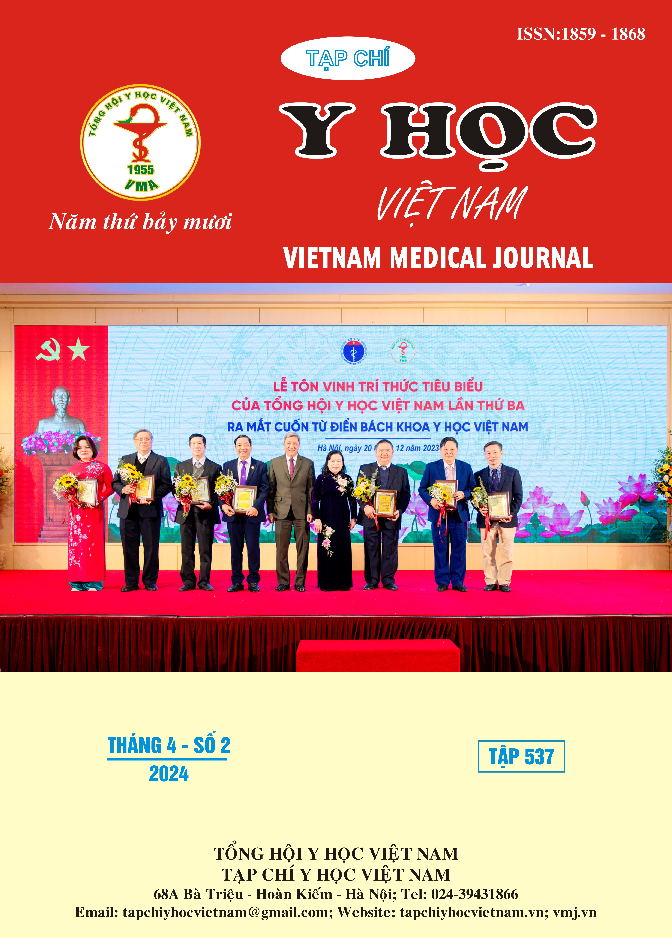STUDY OF THE EFFECTIVENESS OF TREATMENT OF SEPTICEMIA CAUSED BY E. COLI VÀ K. PNEUMONIAE IN ADULT LEUKEMIA PATIENTS AT NIHBT DURING PERIOD 2018-2020
Main Article Content
Abstract
Background: Septicemia caused by K. pneumoniae and E. coli is commonly seen in patients with leukemia treated at NIHBT. Purpose: this study aimed to analyze the microbiological characteristics and effectiveness of antibiotics in septicemia caused by K. pneumoniae and E. coli in adult leukemia patients treated at the NIHBT. Patients and methods: 242 patients files diagnosed with septicemia caused by K. pneumoniae and E. coli in adult leukemia patients treated at the Department of chemotherapy (NIHBT) during period 2018-2020. Results: (1) 21,4% and 46,9% K. pneumoniae and E. coli still sensitive to C3G/C4G, the sensitiveness to carbapenem is 65,5% và 27,2%, respectively, resistance to carbapenem is 13,1% và 25,9%, respectively; (2) The most common choice for treatment is protocol based on carbapenem (70,8%); (3) 30 days history of antibiotics use can affect the risk of C3G/C4G and carbapenem resistance 1,5 and 1,87 times, respectively compared to sensitive group.
Article Details
Keywords
K. pneumoniae, E. coli, kháng sinh, nhiễm trùng huyết, lơ xê mi
References
2. Viện Huyết học Truyền máu Trung ương (2018), "Báo cáo số liệu vi khuẩn năm 2018".
3. Hội Hồi sức Cấp cứu và Chống độc Việt Nam (2020), "Hướng dẫn chung sử dụng kháng sinh", tr. 6-7.
4. Freifeld Alison G., Bow Eric J. et al. (2011), "Clinical practice guideline for the use of antimicrobial agents in neutropenic patients with cancer: 2010 update by the Infectious Diseases Society of America", Clinical Infectious Diseases, 52 (4), e56 - e93.
5. Tang Yishu, Cheng Qian et al. (2018), "Prognostic factors and scoring model of hematological malignancies patients with bloodstream infections", Infection, 46(4), tr.513- 521.
6. Carvalho Ana Sofia, Lagana Diana, et al. (2020), "Bloodstream infections in neutropenic patients with haematological malignancies", Infection, Disease & Health, 25 (1), tr. 22 – 29.
7. Chen Chien - Yuan, Tien Feng - Ming et al. (2017),"Clinical and microbiological characteristics of bloodstream infections among patients with haematological malignancies with and without neutropenia at a medical centre in northern Taiwan, 2008–2013", International Journal of Antimicrobial Agents, 49 (3), tr. 272 – 281.
8. Mikulska Małgorzata, Viscoli Claudio et al. (2014), "Aetiology and resistance in bacteraemias among adult and paediatric haematology and cancer patients", Journal of Infection, 68 (4), tr. 321 – 331.
9. Quan Jingjing, Zhao Dongdong, et al. (2016), "High prevalence of ESBL-producing Escherichia coli and Klebsiella pneumoniae in community-onset bloodstream infections in China", Journal of Antimicrobial Chemotherapy, 72(1), pp. 273-280.
10. Baden L.R., Swaminathan S., et al. (2020), NCCN Clinical Practice Guidelines in Oncology: Prevention and Treatment of Cancer-Related Infections, National Comprehensive Cancer Network (NCCN).


